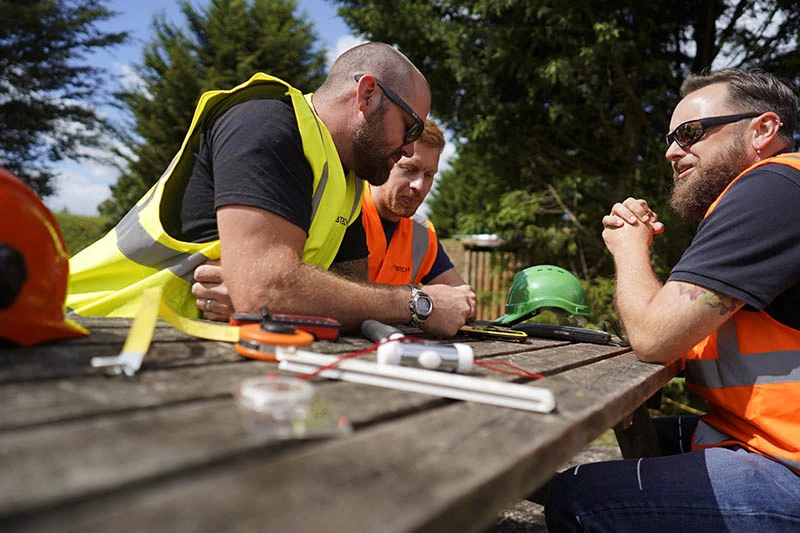Arboricultural Excellence for Development in Southampton
The principal port city on the south coast of England, Southampton is defined by its deep maritime history and its position as a gateway to the world. As a major urban and economic centre, the city has seen significant residential and commercial expansion, particularly around the waterfront and its extensive suburban areas. Being milder and coastal, the climate here supports a diverse range of tree species, making the city’s green spaces like Southampton Common extremely valuable ecological assets.
The balance between development and conservation is overseen by Southampton City Council and the New Forest National Park Authority on the periphery, both of whom mandate stringent environmental policies. For any project on a site that contains protected trees or significant woody vegetation, a professional BS5837 assessment is non-negotiable. Ignoring this can lead to costly delays and difficulty in obtaining the necessary permissions from the local planning authority. Our comprehensive service helps you navigate these regulations efficiently, providing the essential tree report required to progress your development project.
The Value of Tree Surveys in Planning
Before committing to a site purchase or finalising design plans, understanding the arboricultural constraints and other potential hazards is the most cost-effective solution, leading to a pre-purchase tree survey to identify potential liabilities early. Alternatively, you may need a detailed tree condition survey that goes beyond the basic inventory required for the planning system. Likewise, if you’re developing on a site you already own, a BS5837 tree survey from an arboricultural consultant will help to establish the condition of all trees present.
The proactive step helps you determine the impact of the tree survey cost on your overall budget and provides clarity on the feasibility of your proposed development, and it is the best way to avoid expensive redesigns later on. We conduct thorough tree inspections to assess the tree’s health and physiological condition. It involves looking for signs of disease, decay or structural defects that could affect the tree’s long-term retention value. The data gathered during this inspection is critical for creating accurate tree reports that satisfy both the planning authority and your own needs, whether it’s planning, safety or insurance requirements.
For all large trees and significant specimens, we establish the estimated remaining useful life expectancy and the recommended category for retention (A, B, C or U). The evidence-based data is essential for both immediate planning needs and for determining future management strategies, ensuring a sustainable approach to the city’s green assets. Furthermore, for sites bordering sensitive habitats, we often integrate a preliminary ecological survey to identify any constraints relating to nesting birds or bat roosts, providing our arboricultural surveys using a holistic view of the site.
Essential Arboricultural Documentation and Mitigation
The mandatory BS5837 assessment leads directly to the creation of the documents that underpin your planning application. The tree report generated by our qualified arboriculturists during a tree survey comprises technical drawings and written analysis, providing the local planning authority with everything they need to make a decision.
A key component of this submission is the tree constraints plan (TCP) – a detailed drawing that accurately maps all trees and identifies the root protection areas (RPAs), which represent the critical minimum area around each tree that must remain undisturbed. The TCP is used by your design team to accurately site all new buildings, infrastructure and hard standings to ensure design integrity.
Where the proposed design conflicts with the RPAs of retained trees, a detailed mitigation strategy is required, taking the form of an arboricultural method statement (AMS). The AMS document specifies the precise and protective construction methods to be used in close proximity to trees, such as the installation of temporary protective barriers and specific ground protection measures.
The detailed approach is crucial to protecting the structural integrity of retained trees and securing planning consent. We also provide clear management recommendations for any necessary tree work, including hedge trimming or remedial tree surgery to support the long-term health of the trees and meet the local authority requirements.
Work with a Specialist Team for Comprehensive Support
Our professional tree surveys are conducted by full-time, expert arboriculturists who understand the unique planning context of Southampton. We work successfully with an extensive client base, including home-owners and major developers across Hampshire, and we can deal with any and all matters, even if you’re dealing with trees within a conservation area or under a tree preservation order (TPO).
By choosing our expert tree service, you gain a partner who provides site-specific advice and cost-effective solutions tailored to your project, including solutions as simple as stump grinding to something as complex as complete tree removal. We handle the complexity of the planning process, liaising with the local planning authority and delivering the necessary detailed reports to streamline your application.
From carrying out a BS5837 tree to creating a comprehensive report, our goal is to achieve successful planning consent and lay the groundwork for managing arboricultural assets across your site based on individual requirements. Contact us today for a free quote without obligation to start your development journey correctly in the Southampton area.


